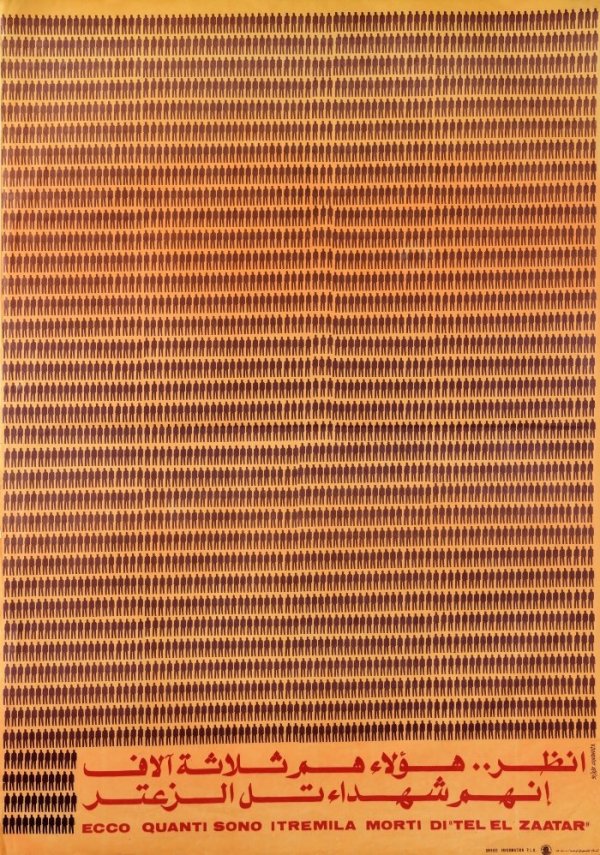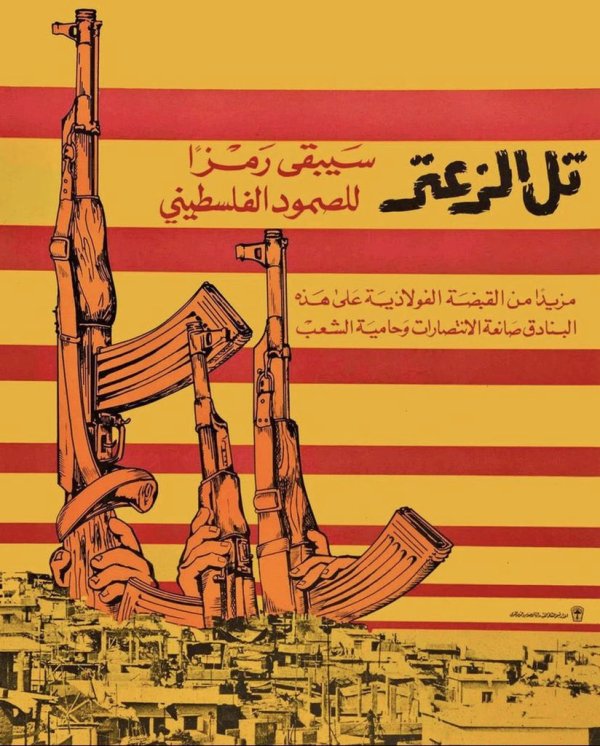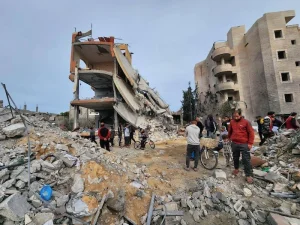
Tal al-Zaatar's massacre occurred on August 12, 1976, during the Lebanese Civil War, in the Tal al-Zaatar Palestinian refugee camp located east of the Lebanese capital, Beirut. The camp housed between 50,000 and 60,000 Palestinian refugees.
Residents: The residents of the camp originated from villages in northern Palestine, particularly from "Al-Khalisa," "Al-Lazzaza," and "Salha." Additionally, Palestinian Bedouins who initially lived in the slaughterhouse area in east Beirut, were transferred to the camp in 1965 due to the spread of rumors about the existence of the plague in the slaughterhouse region.
Background Information: Following Israel's occupation of the West Bank, Jerusalem, the Golan Heights, and most of Sinai in 1967, millions of Palestinians became refugees in neighboring countries like Lebanon, Jordan, and Egypt. Lebanon and Jordan hosted the majority of Palestinian refugees, and large refugee camps were established by Arab countries to accommodate them.
As Palestinians moved to neighboring countries, Palestinian resistance and militant organizations also relocated. This resistance played a significant role in confronting the Zionist entity, gaining influence within Lebanon and Jordan. The presence of Palestinian refugees created tensions, especially in Lebanon, where the Lebanese government struggled to control Palestinian activities. The situation worsened with increasing support from Lebanese Muslims for Palestinian resistance, leading to internal conflicts in Lebanon in 1975.
The Palestinians achieved significant victories, leading to clashes between Maronite Christians and Palestinians. The Syrian army intervened to stop Palestinian operations and militias, shifting the course of the conflict. By June 1976, Syrian forces besieged Palestinian and Lebanese positions, cutting off their supply lines.
Siege of Tal al-Zaatar: The siege of the camp began on June 22, 1976, lasting for 52 days. The camp faced water, electricity, and food shortages. It underwent 72 attacks, with over 55,000 shells fired. Relief organizations were prevented from entering the camp. Negotiations facilitated by Arab leaders led to an agreement allowing only civilians to leave the camp under the auspices of the International Red Cross. On August 12, 1976, the siege ended with the fall of the camp, and Lebanese and Syrian forces entered, committing atrocities, including massacres, mutilations, and the slaughter of children, women, and the elderly.
Perpetrators of the Tal al-Zaatar Massacre: The massacre was carried out by Syrian forces in Lebanon and Christian Lebanese forces, including the Phalange Party led by Pierre Gemayel, the Tigers militia affiliated with the Free Patriotic Movement led by Camille Chamoun, the Zgharta Liberation Army led by Tony Franjieh, and the Guardians of the Cedars militia.
Victims of the Tal al-Zaatar Massacre: The massacre resulted in 4,280 deaths among Palestinian refugees, half during the siege and half during the camp's fall. Most victims were civilians, including women, children, and the elderly, in addition to thousands of wounded and hundreds missing. After the massacre, survivors were dispersed to other Palestinian camps in Lebanon.
After the Taif Agreement in 1989, which ended the Lebanese Civil War with the slogan "Forgive and Forget," the Lebanese government refused to rebuild the camp and prevented the return of displaced refugees.
Stories from the Tal al-Zaatar Massacre: Several accounts describe the brutal actions during the massacre, including the targeting of men, women, and children. One story mentions a father defiantly declaring his son's Palestinian identity before being shot. Another recounts the killing of a Palestinian nurse named Elias for his nationality.
*Reference: "Siege of Tal al-Zaatar: Testimonies and Analysis" by Ali Hussein Khalaf, 1976.





















التعليقات - 2